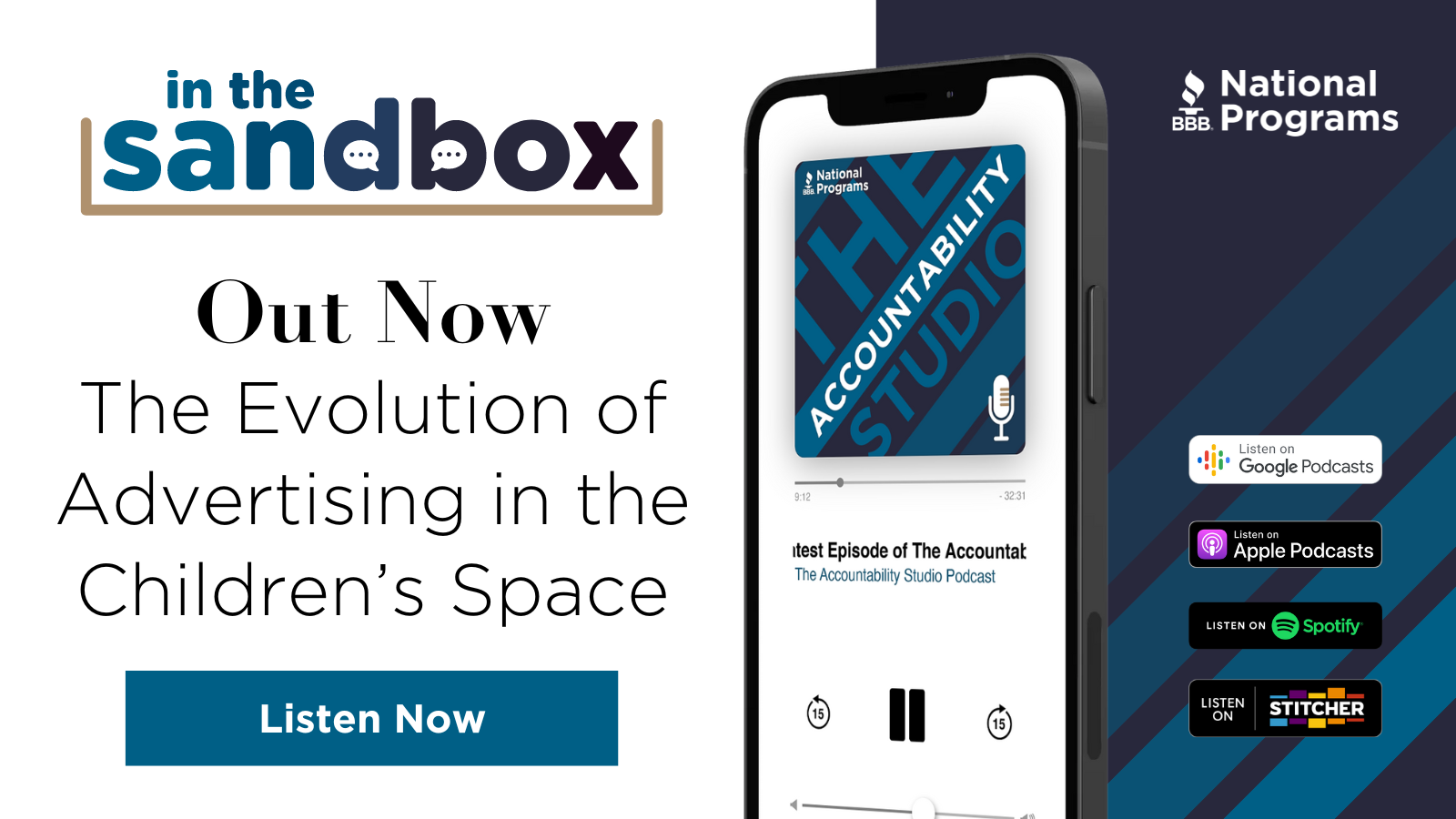The Accountability Studio

The Evolution of Advertising in the Children’s Space

For the last 50 years, companies marketing to children have held each other to a higher standard. In 1974 the Children’s Advertising Review Unit (CARU) was established as the U.S. mechanism of independent self-regulation to protect children under age 13 from deceptive or inappropriate advertising. Over the years and as technology evolved, CARU expanded to address new media platforms, new advertising techniques, and to ensure that children’s data is collected and handled responsibly online.
Join Rukiya Bonner, Director, CARU, BBB National Programs and her guest, former CARU attorney Katie Goldstein, now the Global Head of Policy and Regulatory Affairs at SuperAwesome, as they take a trip down memory lane and revisit memorable child-directed commercials, discuss how advertising has changed over the years, identify some of CARU’s most impactful self-regulatory guidelines, and explain CARU’s role in helping ensure that as technology has changed, children remain protected.
In this episode, the host and guest discuss the history and impact of the Children’s Advertising Review Unit (CARU) in self-regulation and protecting children in the advertising space. Rukiya and Katie highlight the guidelines and cases that have shaped the industry over the past 50 years, including the importance of safety, diversity, and avoiding deceptive advertising practices. They also mention the role of pre-screening services, discuss the intersection of advertising and privacy, and conclude with a reminder that CARU’s guidelines still apply in the evolving landscape of AI and the metaverse.
Key Takeaways:
- (4:22) The guidelines have evolved to address changing technology and advertising practices. Its evolving guidelines demonstrate adaptability to technological advancements and shifts in advertising methods, ensuring continued relevance and effectiveness.
- (6:14) Safety, diversity, and avoiding deceptive practices are key priorities in children’s advertising. Advertisers have special responsibilities toward children and should recognize the power of advertising to promote positive change. Safety, diversity, and the prevention of deceptive practices stand as foundational pillars in CARU’s approach to children’s advertising, prioritizing the well-being and informed consumption of young viewers.
- (10:19) Pre-screening services help ensure compliance with CARU guidelines. Through pre-screening services, CARU fortifies adherence to its guidelines, bolstering confidence in the ethical conduct of advertisers targeting children.
- (19:01) CARU’s guidelines still apply in the evolving landscape of AI and the metaverse. Even in the emergent realms of AI and the metaverse, CARU’s guidelines maintain their applicability, serving as essential guardrails in navigating the evolving landscape of digital advertising. By upholding these standards, CARU fosters a safer and more transparent advertising environment for children, regardless of technological advancements.
The post The Evolution of Advertising in the Children’s Space appeared first on BBB National Programs.






 Visit Podcast Website
Visit Podcast Website RSS Podcast Feed
RSS Podcast Feed Subscribe
Subscribe
 Add to MyCast
Add to MyCast